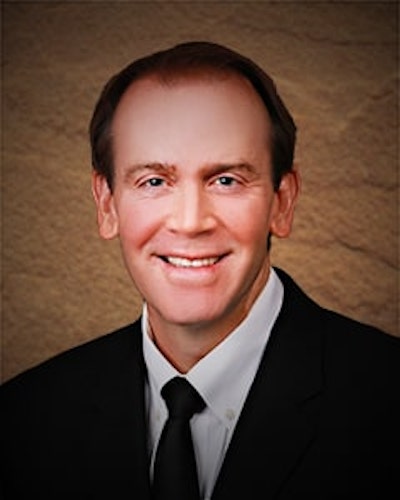
In addition to directing the Carbon Science and Engineering Research group at EGI, Dr. McPherson is an USTAR Professor of Civil and Environmental Engineering at the University of Utah. For the past 10 years, Dr. McPherson has conducted carbon management and engineering research, especially geological sequestration studies, but including other modes of carbon management as well, such as biomimetic and other approaches. Technical focus areas include groundwater and reservoir simulation, multiphase flow analysis and simulation, rock deformation, and subsurface chemically reactive transport analysis and simulation. McPherson and his research group maintain a high pressure/high temperature laboratory capable of combined multiphase flow and rock mechanical response experimentation, and are currently conducting flow tests to quantify diagenetic changes on rocks during CO2 sequestration. Other research that Dr. McPherson continues to pursue includes coupled heat and fluid processes in sedimentary basins and geothermal systems, and petroleum generation and migration processes.
Regional & Basin Experience
-
Paradox Basin
-
Sacramento Basin
-
Piceance Creek Basin
-
Uinta Basin
-
Powder River Basin
-
San Juan Basin
-
Permian Basin
1996 Ph.D. in Geophysics, University of Utah
1992 M.Sc. in Geophysics, University of Utah
1989 B.Sc. in Geophysics, University of Oklahoma
B.J. McPherson and D.F. Boutt, 2007, Analysis of the role of fluids in causing fractures in the Spraberry Trend, Midland Basin, Geofluids, v.7, p. 415-426, doi: 10.1111/j.1468-8123.2007.00195.x
Liu, N., L. Li, B.J. McPherson, and R. Lee, 2008, Removal of organics from produced water by reverse osmosis using MFI-type zeolite membranes, Journal of Membrane Science, Volume 325, Issue 1, p. 357-361, ISSN 0376-7388, http://dx.doi.org/10.1016/j.memsci.2008.07.056.
Li, L., N. Liu, B.J. McPherson, and R. Lee, 2008, Influence of Counter Ions on the Reverse Osmosis Permeation of NaCl Solution through MFI Zeolite Membranes, Desalination, Volume 228, Issues 1-3, Pages 217-225. http://dx.doi.org/10.1016/j.desal.2007.10.010.
Weon Shik Han and Brian J. McPherson, 2008, Comparison of Two Different Equations of State for Application of Carbon Dioxide Sequestration, Advances in Water Resources, v. 31, p. 877 890, http://dx.doi.org/10.1016/j.advwatres.2008.01.011.
Sam Earman, Brian J.O.L. McPherson, Fred M. Phillips, Steve Ralser, James M. Herrin, James Broska, 2008, Tectonic Influences on Ground Water Quality: Insight from Complementary Methods , Ground Water, Vol. 46, No. 3, p. 354 371, http://dx.doi.org/10.1111/j.1745-6584.2007.00402.x
McPherson, B. J. O. L. and Sundquist, E. T., 2009, editors, The Science and Technology of Carbon Sequestration, AGU Monograph Series, Publisher: American Geophysical Union, Washington, D.C., scheduled publication and print date: May, 2009.
Brian J.O.L. McPherson, Weon Shik Han and Barret S. Cole, 2008, Two equations of state assembled for basic analysis of multiphase CO2 flow and in deep sedimentary basin conditions, Computers & Geosciences, v. 34, p. 427 444, http://dx.doi.org/10.1016/j.cageo.2007.05.017.
David F. Boutt, Benjamin K. Cook, Brian J. O. L. McPherson, and J. R. Williams, 2007, Direct simulation of fluid-solid mechanics in porous media using the discrete element and lattice-Boltzmann methods, JOURNAL OF GEOPHYSICAL RESEARCH, VOL. 112, B10209, doi:10.1029/2004JB003213.
L. Li, N. Liu, B.J. McPherson, and R. Lee, 2007, “Enhanced Water Permeation of Reverse Osmosis through MFI-type Zeolite Membranes with high Aluminum Contents,” Industrial & Engineering Chemistry Research, 46, 1584-1589.
Research Interests
- Basin Modeling
- Geological Carbon Sequestration
- Geothermal Systems
- CO2 Enhanced Geothermal Systems
- Induced Seismicity Associated With Injection
Dr. McPherson was recently promoted to full Professor rank in 2013, and his official title is USTAR Professor of Civil and Environmental Engineering at the University of Utah. He earned M.S. and Ph.D. degrees in Geophysics from the University of Utah and a B.Sc. in Geophysics from the University of Oklahoma.
Dr. McPherson’s research and teaching experience includes multiple areas, all related by a common thread: fluid flow. He began his academic career as an undergraduate with a senior thesis on apatite fission-track annealing models. As a new graduate student, his first project was basic analysis of a small geothermal system in the Escalante Desert of southern Utah, followed by focused research on heat flow analysis of the Powder River basin for his M.S. His doctoral work included development of a numerical sedimentary basin evolution model using Utah’s Uinta basin as a case study. The model includes 3-D basin formation (sedimentation, uplift, erosion) with coupled thermal effects, oil generation and migration, and associated overpressure analysis. As a post-doctoral scholar at Johns Hopkins University, he extended the overpressure analysis to include poroelastic impacts with the Sacramento basin of California as a case study.
He has published more than 45 papers and book chapters.
Professional Research Interests & Expertise
Since 1997, Dr. McPherson has conducted carbon management and engineering research, with particular attention to geological sequestration studies. His research has also included other modes of carbon management as well, such as biomimetic and other approaches. His technical focus areas include groundwater and reservoir simulation, multi phase flow analysis and simulation, rock deformation, and subsurface chemically reactive transport analysis and simulation. Dr. McPherson continues to pursue additional research in coupled heat and fluid processes in sedimentary basins and geothermal systems, and petroleum generation and migration processes.
Leadership Activities & Project Management
Dr. McPherson formed the Southwest Partnership project in 2003, one of seven regional partnerships funded by the U.S. Department of Energy to evaluate the science and technology of storage of atmospheric carbon in underground geological formations and in surface soil and vegetation. In 2012, the project was selected by the Department of Energy’s National Energy Technology Laboratory (NETL) to proceed with a deployment phase, which will involve injection of at least 1,000,000 tons of CO2 into a deep geological formation in the Anadarko Basin in northern Texas. The deployment phase will assess the efficacy of large-scale geological CO2 storage and evaluate this as an approach for reduction of greenhouse gases in the atmosphere. This project and grant involves approximately $6,500,000 in funding for the University of Utah. More information about the project is available at southwestcarbonpartnership.org and http://CO2.egi.utah.edu.
